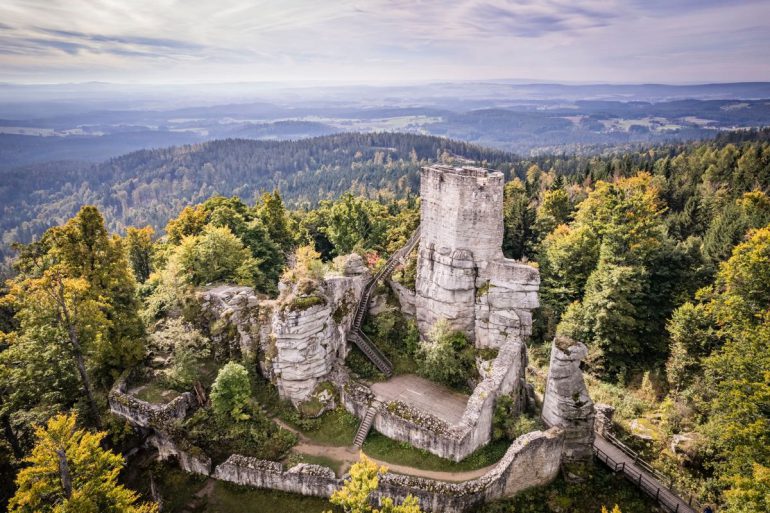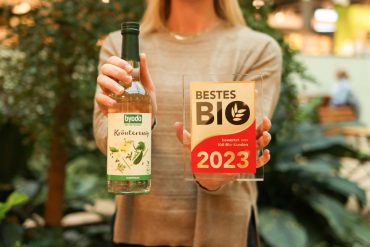The image that many tourists have in mind when they think of their favorite vacation destination Bavaria is often characterized by alpine views, traditional costumes, folk festivals and urban metropolises such as Munich, Nuremberg or Würzburg. Yet there are many more attractive destinations to discover, including ones that even Upper Bavarians like me and my companion Johannes, responsible for photography, have only heard about.
Pearl of nature in the northeast of Bavaria
When researching regions that particularly represent the range of topics covered by Touremo magazine, such as original regional cuisine, experiencing nature and sustainable destinations and initiatives, one almost inevitably comes across a particularly beautiful but little-known corner, the Steinwald. Yet it can be reached in about an hour from major cities such as Nuremberg and Regensburg, Leipzig and Dresden are each just under 200 kilometers away, and Munich 250.
The granite ridge, over 900 meters high, is located in northeastern Bavaria near the Czech border between the Upper Palatinate Forest and the Fichtel Mountains. Anyone hiking through the second smallest of Bavaria’s 19 nature parks in the center of the region, with its spruce and mixed forests, will unexpectedly come across steeply towering, often bizarrely shaped rock formations that gave the area its name.
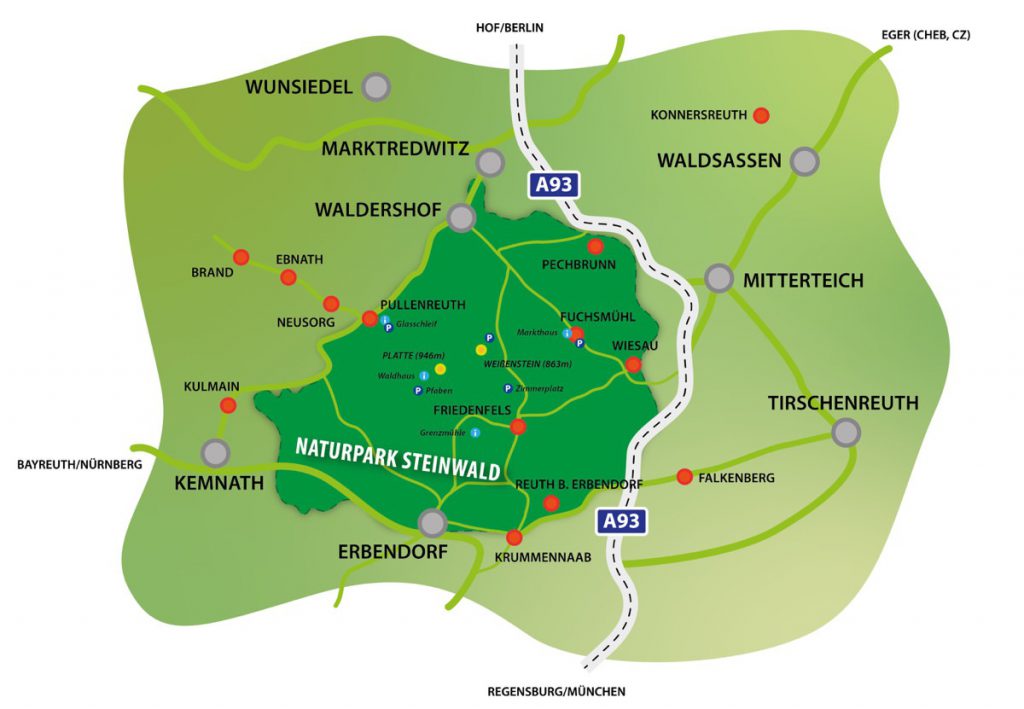
Great support
Before we started our trip, we exchanged ideas with Ms. Wenisch, the managing director of the Upper Palatinate Forest Tourism Association, and got plenty of tips from her for worthwhile destinations and interesting local contacts. What’s more, Mrs. Wenisch even organized an individual visit program that was exactly tailored to the Touremo topic spectrum and further increased our joyful anticipation. We would like to take this opportunity to express our sincere thanks to Mrs. Wenisch for this great support.
Seat Germany provided us with a press test car for our e-trip. The “Cupra Born” is based on the MEB platform of the parent company Volkswagen and is a sportier variant of the VW ID 3. We’ll let you know how the chic Spaniard, named after “el Born,” the historic district in the heart of Barcelona, performed on our tour from time to time in our report.
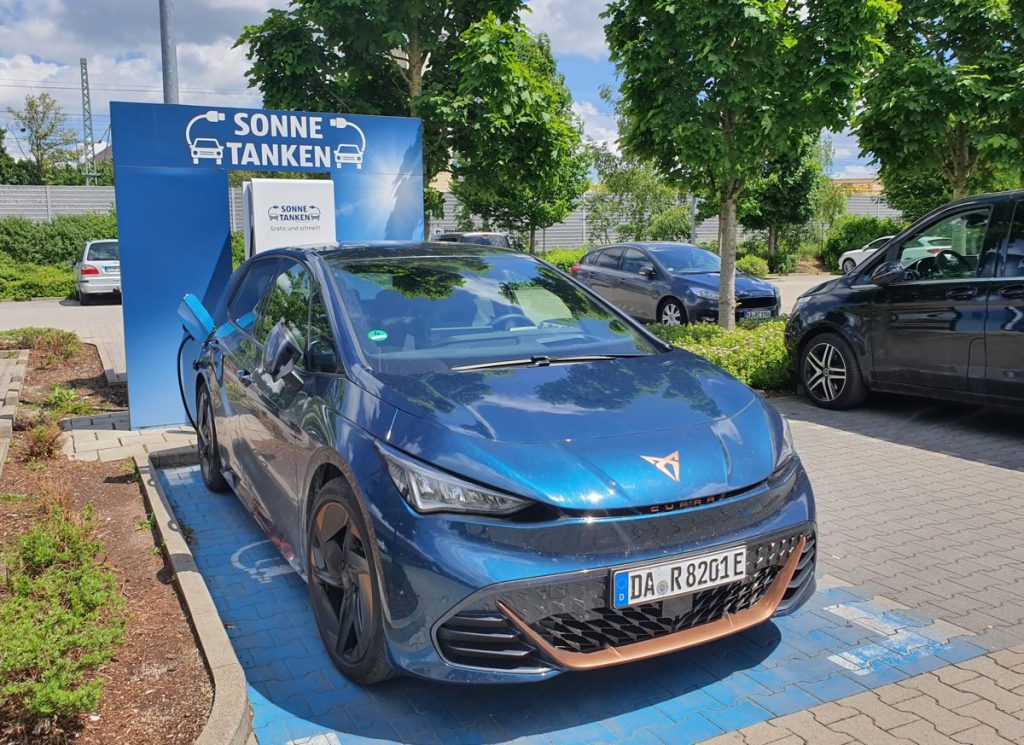
Aware that the manufacturer’s stated range of 420 kilometers, as is generally the case, might not be realistic, we were curious to see what range would be displayed after a full charge. After all, it was a hundred kilometers less, which was a considerable difference considering the relatively warm temperatures. However, since the range forecast is calculated based on previous driving behavior, we were confident that we would be able to get from Munich to the Upper Palatinate Forest while cruising in a relaxed manner without stopping to charge. This was eventually achieved without any problems.
Volcano experience in Parkstein
Our first destination was the village of Parkstein, located south of the Steinwald, with its imposing basalt cone visible from afar. A popular destination not only for professional and amateur geologists, but also, as could be seen from the excursion buses, for interested laymen.
At the parking lot located directly below a 38 meter high basalt wall, there is a charging station with two connections, which I was able to unlock with the SWM charging network card.
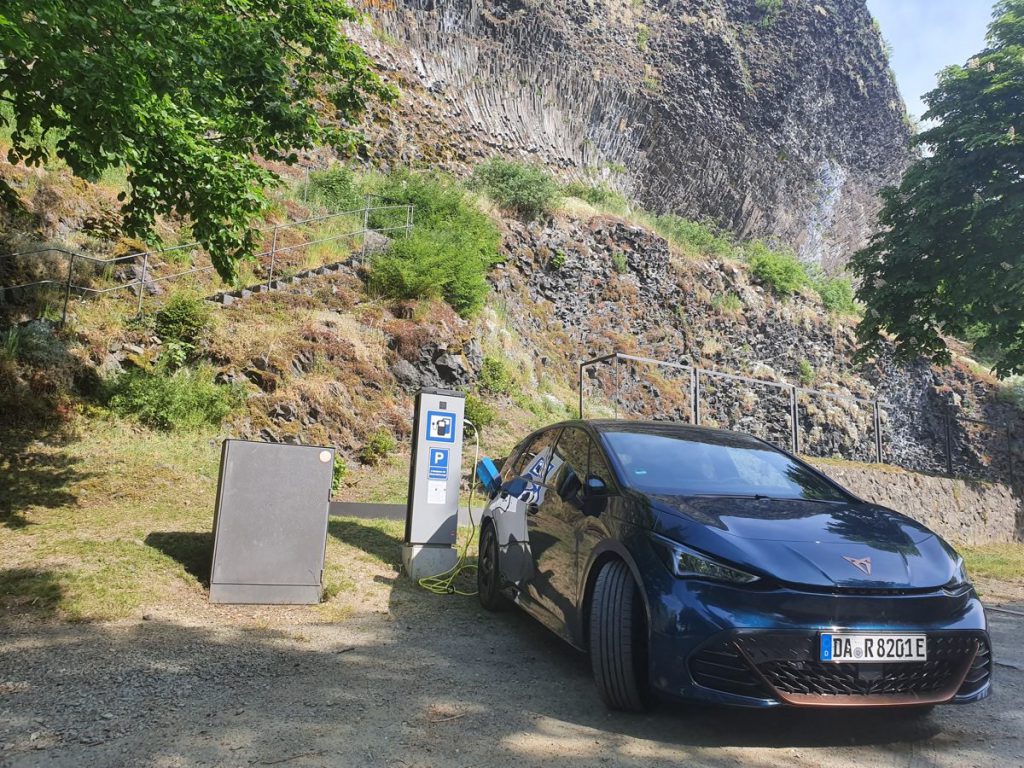
Dort erwartete uns schon die Geopark-Rangerin Bettina Rüstow, um uns auf eine aufregende Reise durch die Erdgeschichte der Region mitzunehmen. Also den Born angesteckt und uns in ihrer Begleitung auf den Weg nach oben gemacht zum Gipfel mit den alten Mauern der einst prächtigen Burganlage des „Hohen Parkstein“. Diese wurde bereits im Jahr 1052 erstmals urkundlich erwähnt. Nebenbei erhält man an mehreren Stationen entlang eines „Geopfads“ an Gesteinsexponaten gut verständliche Infos.
Es ist sogar möglich, ins Innere des Parksteiner Vulkans zu gelangen und zwar über einen Felsenkeller, der in früheren Zeiten mühevoll gegraben und als Lagerraum für Bier und Lebensmittel genutzt wurde. Hier lassen sich, wie uns die Geo-Führerin zeigte, anhand von helleren Schichten in den dunklen Trümmergesteinen Indizien für frühere Explosionen erkennen.
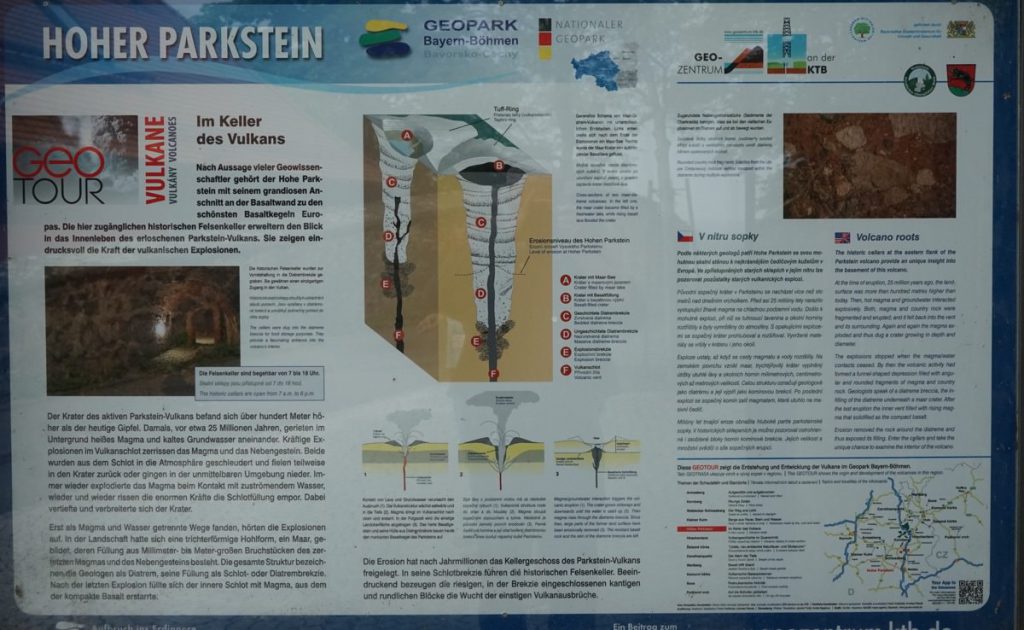
Once you reach the top of the village, a visit to the Volcano Experience Museum is an absolute must. It is located in a former country judge’s castle, supplemented by a new building. Here you can embark on a geological journey through time from the Tertiary period through the Middle Ages to the present day.
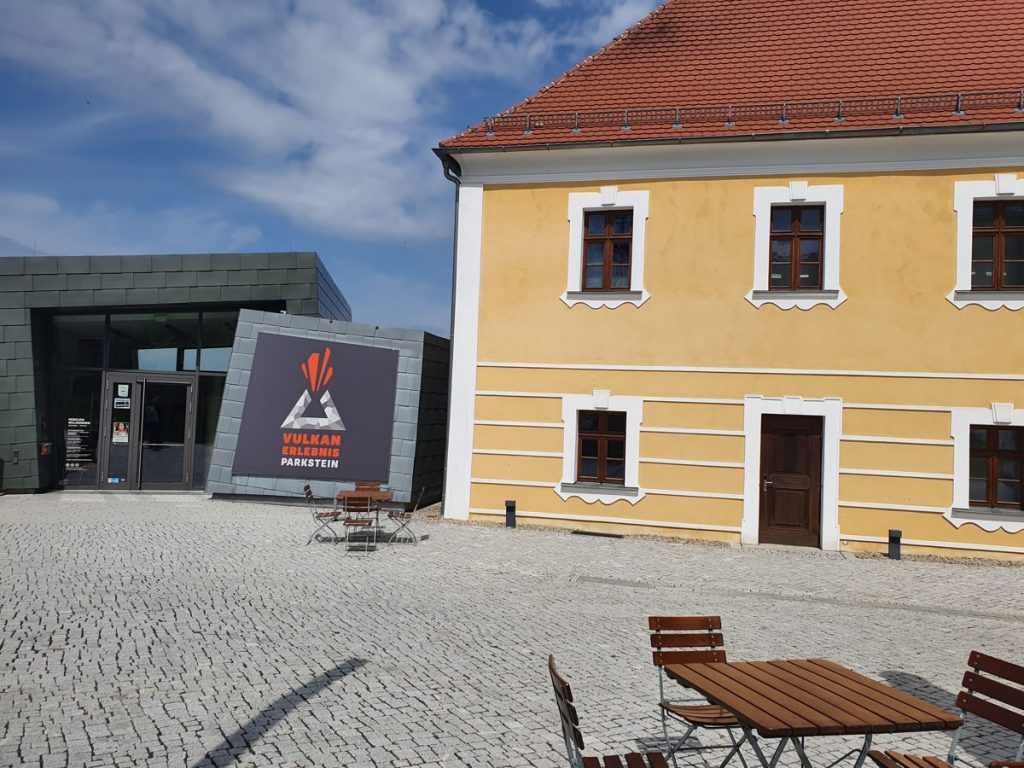
The content is conveyed in a clear and understandable way, using short films and audio information, among other things. A “real” volcanic eruption with a column of light, smoke and loud thunder is particularly fascinating and exciting. An impressive demonstration, through which the elemental force of such an explosion can be imagined.
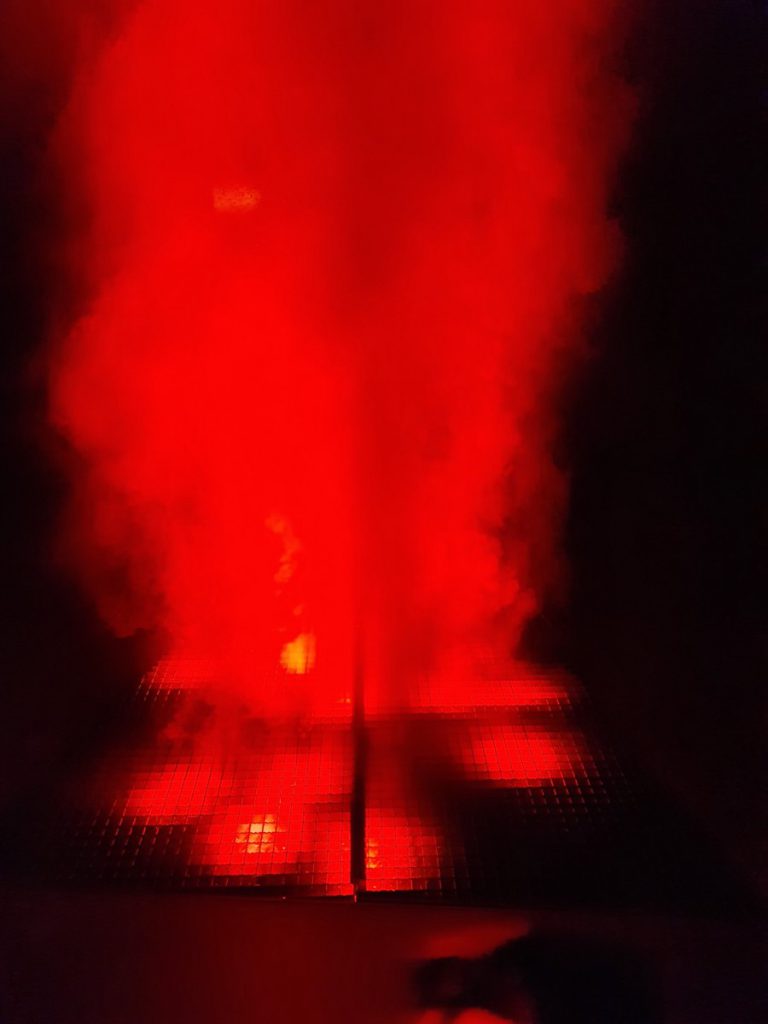
Enchanted by the exciting explanations of our guide Mrs. Rüstow, we recommend groups of 10 or more people to book a guided tour by her or her Geopark Ranger colleagues in advance.
Markt & Cafe Parkstein
Actually, after these impressive experiences and filled with plenty of information, for example, about cooled magma, which turned into basalt columns and eroded in the last 23 million years, we wanted to make our way back to the parking lot. Then, unexpectedly, we discovered in the village a unique mixture of café, gallery and store. With a great cake selection and an idyllic, lovingly designed garden in the courtyard. It goes without saying that this oasis is also run by an extremely friendly hostess. Conclusion: a detour to Claudia Steger’s “Markt & Cafe Parkstein” is definitely worthwhile, but you should be aware of the limited opening hours beforehand.
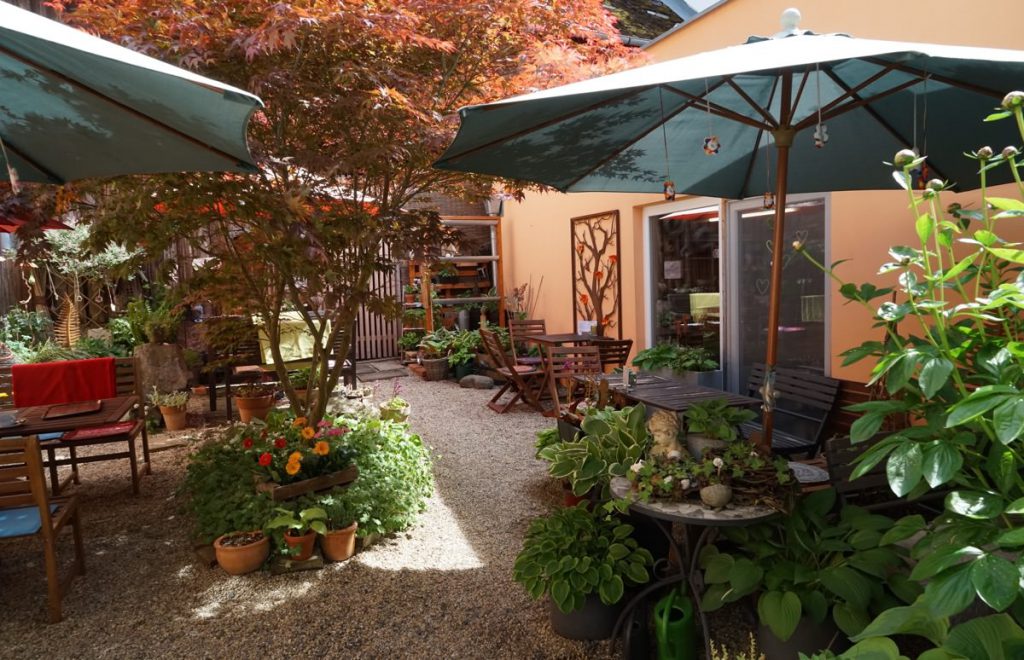
Strengthened and with a “fully fueled” car, we made our way to Falkenberg, our first stop in the Steinwald itself.
Ein besonderes Getränk als regionale Spezialität
“On behalf” of our readers, we always search for regionally typical, traditional and artisan specialties in our e-mobile travel reports. We also aim not only to identify culinary specialties, such as “Passengers of the Ark of Taste,” as listed in the corresponding initiative of Slowfood Germany, but also to name sources of supply for these special foods and dishes. Often their production is more elaborate than the standard foods and beverages available everywhere. True to the motto “saving through eating”, old crops, livestock breeds and even dishes and products can only be saved from extinction and oblivion if consumers get to know and appreciate their often special goodness. And potential customers and suppliers can find each other.
Anyone researching such a regional speciality in the Upper Palatinate Forest will immediately come across a unique drink, the “Zoigl”. This is a bottom-fermented beer brewed in the traditional way. In the open brew pan over a wood fire, the mash – a mixture of water and barley malt – is first boiled, then hopped and thus heated again as “wort”. This brew is now placed in large containers in the cellar, where the yeast does its work, fermentation. After about 10 days of fermentation, the Zoiglbier is filled into barrels, in which it matures for several more weeks.
Only in five towns are there still communal breweries where the traditional Zoigl is brewed.
Although the same brewing process is always used, each Zoigl tastes different, because each brewer has his own recipe, according to which the ratio of ingredients is determined. Even with one and the same Zoiglwirt there can sometimes be differences. Consequently, hardly any beverage is more individual and multifaceted.
The Zoigl, a beer with a long tradition
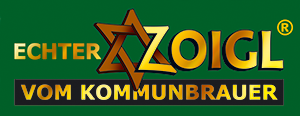
Zoigl has been brewed since the 14th or 15th century in “communal breweries”, which in 1854 still existed in 75 communities in what is now the Upper Palatinate. Today, they exist only in the towns of Eslarn, Falkenberg, Mitterteich, Neuhaus and Windischeschenbach as the product of a community of brewing citizens. This civic association jointly maintains a brewery, for which it was once granted the right by the sovereign of the time. Each member of this association pays a so-called “Kesselgeld”, a kind of membership fee.
Visit to the Zoiglwirt
The beer speciality is always offered in a certain rotation at the various localities. The person whose turn it is to brew shows this by hanging a pole out of the window, usually with the brewer’s star on it.
At the time of our visit to the Steinwald, the Fischer family of the Kramer-Wolf inn in Falkenberg was just allowed to pour. Since the weather played along, we were able to sit outside at beer garden tables. Although it was only early in the afternoon and we were on our way by car, we of course did not miss the opportunity to try the in-house Zoigl. True to the Bavarian motto “oans geht oiwei” (German: “one thing always goes”). And because we were hungry in the meantime and wanted to counteract the effects of the alcohol with a hearty snack, we ordered a sausage salad and, as it turned out, a more than generous “Hausmacher-Brotzeitteller” with excellent ingredients from the in-house butcher shop. The conclusion of our “degustation” can be formulated – under the self-evident preservation of journalistic objectivity – with one word: heavenly. Although we do not know whether, due to the great individuality and variance of the respective brews, the delicious Zoigl from Kramer-Wolf can be considered a reference for all communal brews in the region, we assume that it can. In this respect, we can expressly advise all beer lovers to spend several days in the Steinwald. For enjoyable drinking, but also to explore the other attractions of the region. There is also a bicycle route, the “Zoigl-Radweg“, which follows the traces of this brewing tradition. The tour is also available as a weekend package “Zoiglbier & Bocklweg” from €94 per person.
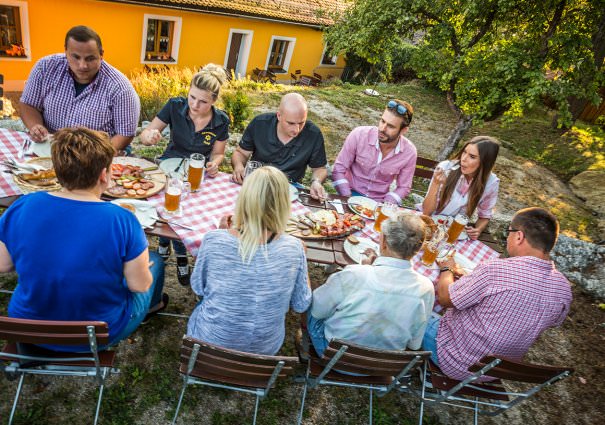
“Real” Zoigl only from the communal brewer
Like many regional specialties that now have “cult status,” traditional Zoigl has been increasingly copied in recent years and served in venues of all kinds. This usually has nothing to do with the traditional way of making and serving Zoigl beer.
In order to distinguish itself from such imitations, the trademark “Echter Zoigl vom Kommunbrauer” was created. It is intended to be both a sign of a 600-year-old tradition and a seal of quality. Whoever stops by under the trademark “Echter Zoigl vom Kommunbrauer” will find…
- Zoigl beer directly from the producer and brewed in the local Kommunbrauhaus,
- a zoiglwirt whose pub and brewing rights are registered in the land register,
- an innkeeper for whom his vocation as a “genuine communal brewer and zoigl innkeeper” takes precedence over commercial interests.
Diese Verpflichtung haben sich 16 Zoiglwirte in den fünf Zoiglorten auferlegt.
The brewing of the original Zoigl beer is part of Bavaria’s cultural heritage and since 2018, the Upper Palatinate Zoigl culture has even been recognized as an intangible cultural heritage in Germany under the UNESCO Convention.
Anyone who wants to find out which Zoiglwirt is serving when can do so via an annual Zoigl calendar in print and on the Internet. A Zoigl Termine app shows all opening hours and Zoiglstuben of the desired period.
More links:
https://zoiglbier.de
https://zoiglbier.de/die-brauer
https://zoiglbier.de/zoigltermine
Text: Peter Grett
Images:
Lead story and picture 10: Thomas Kujat
Graphic nature park: Max Steinkohl
Picture 1, 2 and 4: Peter Grett
Picture 3 and 6: Johannes Poschner
Pictures 7-9: Matthias Kunz

